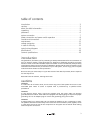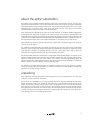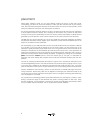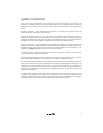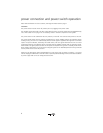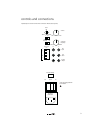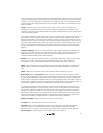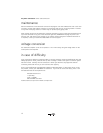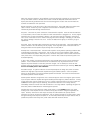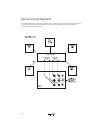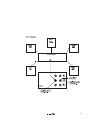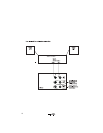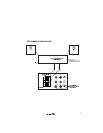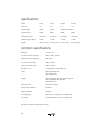
There are four controls that affect the quality of sound produced by the system, the volume control, the
crossover frequency control, the bass EQ control and the phase switch. These controls are all somewhat
interactive so it may be necessary to go through these settings more than once to get the best overall
sound. Generally, the controls should be set in the order listed. Then further minor adjustments can be
made as needed.
volume, subwoofer control: The subwoofer volume control is used to match the output of the
subwoofer to the satellite speakers. How this control should be set depends on the position of the
subwoofer, the position of the satellite speakers and the gain (amplification factor) of the amplifier used
to drive the satellite speakers.
Start with the subwoofer volume control at the center of its rotation range. Set all the tone controls on
the amplifier to their flat positions and turn off any other controls such as a loudness circuit that will
affect the tonal balance of the sound. Listen carefully to a variety of music. Then, if necessary, turn the
subwoofer volume control up (clockwise) or down (counterclockwise) slightly. Listen to more music and
if necessary adjust the subwoofer volume control again. Experiment with the subwoofer volume control
setting until the subwoofer-to-satellite speaker volume is musically well matched. The best subwoofer
volume control setting is one that produces a seamless transition from the subwoofer to the satellite
speakers.
crossover frequency control: The crossover frequency control adjusts what frequency the subwoofer
plays below. This control allows you to adjust the subwoofer’s output to take over exactly where the
satellite speakers stop. Start with this control set half way and adjust until the sound from the
subwoofer and the satellite speakers blends seamlessly.
bass EQ control: The bass EQ control can boost or attenuate the subwoofer’s output at around 35Hz
with a range of 12dB. This control should be adjusted according to your tastes. Generally, a
subwoofer in a corner will need less boost than one placed closer to the center of the room.
phase switch: The phase switch can change the subwoofer's phase by 180 degrees in relation to the
satellite speakers. This switch should be switched to the position that sounds best in your listening
room.
power on/off switch: The power switch on the subwoofer has two positions, on and off.
power mode switch and protection indicator: The power mode switch has two positions, standby
and on. In the standby position the amplifier's signal sensing circuitry will turn it on automatically when
an audio signal is applied to the high level or low-level inputs. The protection indicator, located by the
on/off switch, will be lit green whenever the unit is on and functioning properly. This indicator will be lit
orange when in standby, and red when in protection mode. When there is no signal present at either of
the inputs the amplifier will go back to standby mode within about twenty (20) minutes.
The subwoofer amplifier monitors its operation. If the subwoofer is operated at a volume level that
might damage the amplifier or the woofer, the protection circuit will shut down the amplifiers output
and the power indicator will light red. If this happens, turn down the volume and wait for the power
indicator to change back to green. If it does not, power down the system and check all connections.
hen power the system back on. If all connections are correct it should power back up with the power
indicator glowing green. Repeated activation of the protection circuit indicates that the subwoofer is
either set up improperly or is being operated in a manner that exceeds it capabilities.
speaker level input: A high level input from a receiver or other source.
line input: A low level input from a receiver or other source.
LFE in/out: The LFE input is designed for use with a surround sound receiver with a dedicated LFE
subwoofer output. LFE is a band limited (less than 120 Hz) channel that reproduces decoded
information from a 5.1 source. The LFE output can be used to send a signal to a second subwoofer.
hi-pass output: An optional output to a 2
nd
receiver with it’s own speakers.
11



